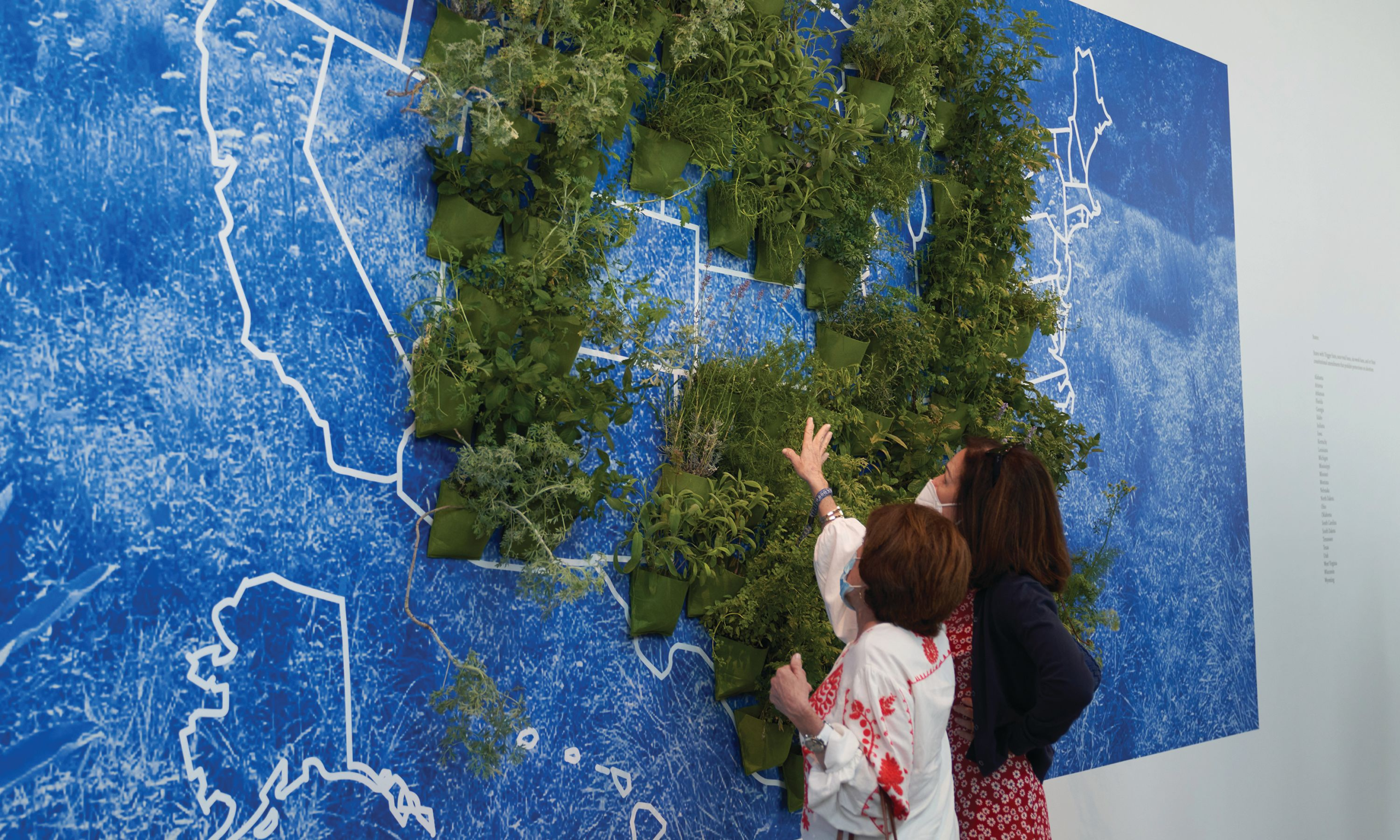Trigger Planting (2022), an installation by the collective How to Perform an Abortion at the Frieze fair, visualises US states with laws that could ban abortion Photo by Allison Dinner
Art fairs are more synonymous with fizz and glitz than protests and placards, but activism is firmly on the bill at this year’s Frieze New York. This is in no small part down to its new director Christine Messineo, who has experience bringing together the worlds of art and advocacy. In the run-up to the 2020 US presidential election, she orchestrated the Plan Your Vote campaign, working with 150 artists and institutions to create social media-friendly works that encouraged people to vote. That project relaunched this week at Frieze.
Elsewhere at the fair, AIR Gallery, the storied feminist artist-run space in Brooklyn, is presenting Trigger Planting (2022) by the collective How to Perform an Abortion. Created from herbs—for thousands of years used to manage fertility—the work maps the US states where so-called trigger laws will ban abortion if the Supreme Court overturns the historic Roe v. Wade decision. Meanwhile, the Mexican artist Pedro Reyes is presenting his nuclear disarmament project, ZERO NUKES (2022), both at the fair and in Times Square (17-24 May).
Such projects are vital in any context. But can activism thrive within the strip-lit booths of essentially glorified trade shows? And does the commodification of protest art render its radical impulses null and void?
Frieze is less hermetically sealed than other fairs, and its roots lie in the cutting edge. The fair was born from a magazine started by Amanda Sharp and Matthew Slotover in 1991, when contemporary art in Britain was still a cottage industry. Even as the industry mushroomed, Frieze kept an element of its punkish spirit. In recent years, the fair has amped up its political offerings. In 2018, Frieze New York’s first Live section was devoted to the poetics of protest, while Frieze Los Angeles has worked since 2019 with the Art for Justice Fund, which brings together artists and advocates to support criminal justice reform.
The Black Lives Matter protests of 2020 brought renewed urgency to discussions of diversity and race, although the online outpouring of support from galleries and museums appeared performative when so little was done to address internal problems. As critics noted, taking action requires time, effort and resources.
And this is where art fairs and their vetting committees must commit to seeking out and supporting galleries and artists who have been excluded from the big leagues. Their presence at major events can galvanise private individuals and institutions to broaden their collections and make way for historically marginalised voices.
As the cult of ownership that has underpinned the art market begins to dissolve, collecting habits, too, are being challenged to open up in other ways. In October 2021, for example, the Tate acquired custodianship of a work by Edgar Calel for 13 years, pledging to support the Mayan ritual that completes it. The museum bought the piece at Frieze London in a deal brokered between the Tate Fund, the Kaqchikel people, the artist and his gallery in Guatemala.
Calel and his gallery, Proyectos Ultravioleta, will make their debut at Art Basel next month, a traditionally corporate fair that this year feels more socially engaged. Sections such as Parcours that operate on the fair’s fringes were always more political, and that content is now finding its way into the main exhibition halls just off the Messeplatz.
Of course, the big bucks are yet to be made with civic-minded or community-based projects, which are still a hard sell at these fairs. But when the art world has been in the thrall of ultra-wealth for so long and the dialogue around art has so often been about money, it is refreshing to think that even the most commercial corners of our industry may contribute to real societal progress.
Indeed, it is exactly here that people need to leverage their privilege the most.

